Namba, a town full of surprises brings the world an unconventional creation
kasai-san_1-1.jpg?fit=2250%2C1500)
Yukihiro Kasai, President of CREO-RU Inc.
Namba is known as Osaka’s district of kuidaore, “where you eat until you drop.” A favourite local specialty is its flour-based dishes called konamono, perhaps the best known of these being takoyaki, balls filled with chopped octopus and cooked on a special griddle. And one of the most popular places to eat takoyaki in Osaka is CREO-RU. Yukihiro Kasai, the restaurant’s owner and director, started the business when he was just 18 years old.
“When I was just a high school student, my mom turned to me one day and said, ‘let’s open a takoyaki restaurant’“.
“I wasn’t against the idea”, says Kasai with a smile.
Kasai is a leader in the local community and food scene, putting a modern spin on traditional Japanese foods, and he’s eager to reintroduce Namba to the world.
A modern spin on old favourites
The name CREO-RU comes from the Latin for creation. As the name suggests, from branding to menu development, Kasai has an inventive approach to this traditional street food.
Though his district might be known for overindulging on food, Kasai has recently launched CREO-RU Healthy, a range of low-carb versions of favourite dishes, in response to feedback from customers.
“Some customers, for example diabetics, have to restrict their diet and can’t eat flour-based dishes. This doesn’t just impact the individuals themselves but also their families who can’t enjoy this food together,” says Kasai.
He experimented with using soy and bean curd lees for about a year, and has developed okonomiyaki and negiyaki with 80% less carbohydrate and a sauce with 78% less carbohydrate.
“There is great potential for low-carb and health-conscious menus at a time when people are more concerned about their health,” says Kasai.
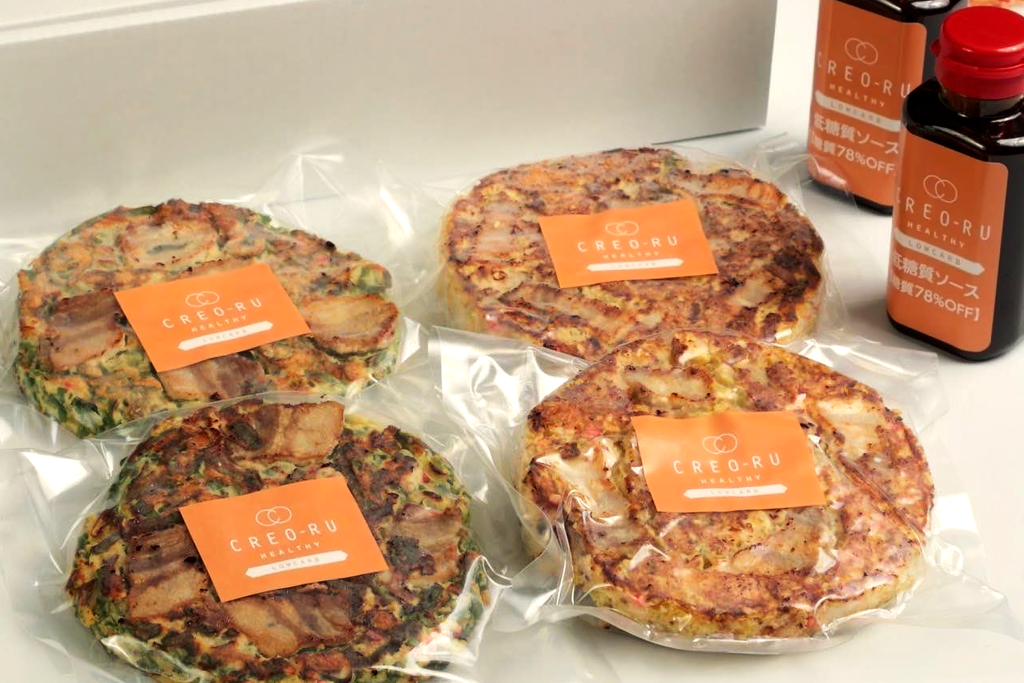
“I believe that an era of choice is coming when it comes to food. In fact, more and more people are choosing to go gluten-free these days.”
He also wants the company to farm its own food, exploring a production method using drones and robots, and a system that can efficiently grow cabbage, onions, and other vegetables. Keeping up with the times, CREO-RU has begun developing menus using rice flour instead of wheat flour.
“In the future, it would be great if we could standardize our own rice flour product as the signature menu of CREO-RU. I believe that the price will be more stable if made with local rice flour than with wheat flour, which tends to rely on imports.”
From local customers to global trends, Kasai is always listening and aiming to improve his offering, and this may well be the reason his restaurant continues to be so successful.
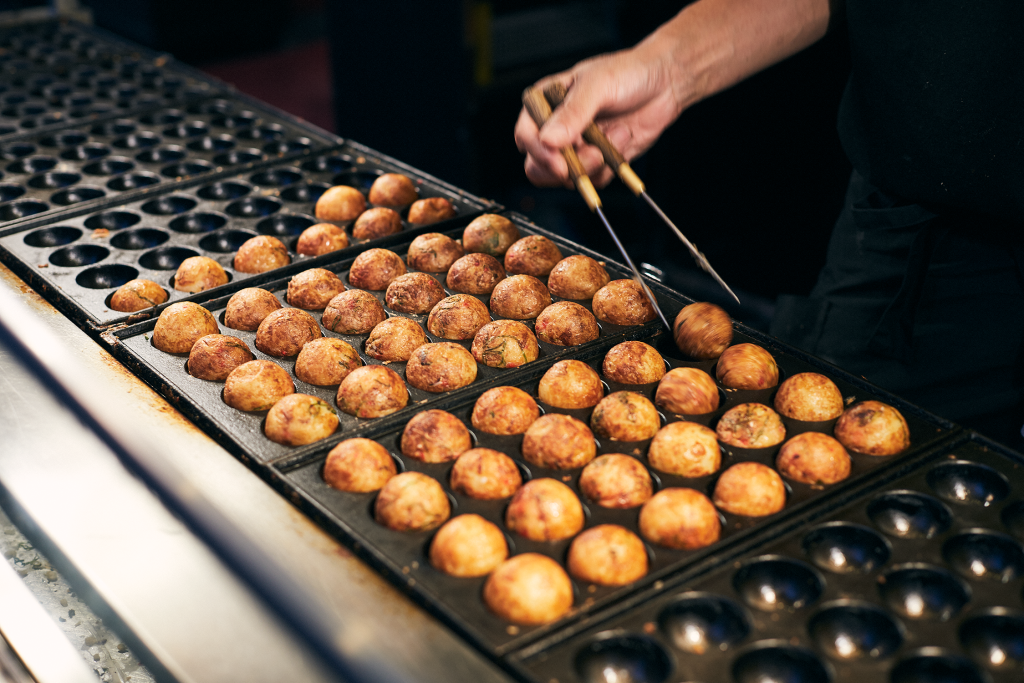
Finding a way forward after days of sleepless nights
Kasai is passionate about sustainable food development, and this interest goes beyond his own restaurant. He began a society to position Osaka as a world hub for food sustainable development goals, an idea born in the pandemic when business disappeared.
“There was no precedent, so we didn’t know how to handle it. I was so worried I couldn’t sleep for months on end. In the midst of all this, I felt we had to seriously consider our purpose and pay more attention to society at large and the surrounding environment.”
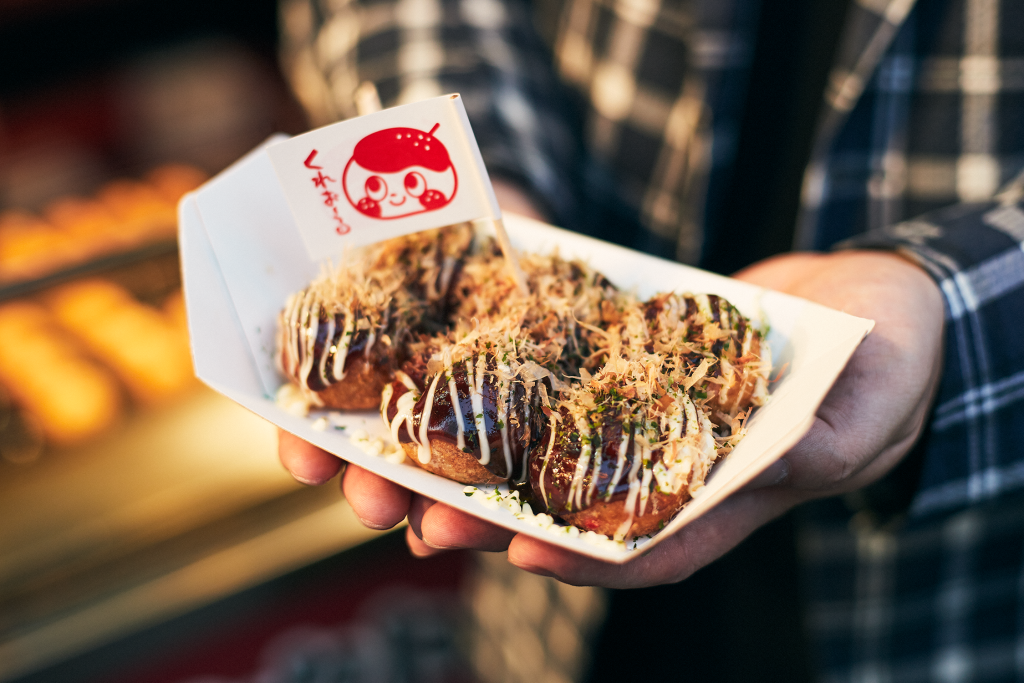
Kasai wanted to use the opportunity to make changes for the better before visitors and foreign tourists eventually returned.
Collaborating with colleagues, Kasai is working on a multifaceted approach, including an entry into Osaka Expo’s Co-Creation Challenge, an initiative that calls for ideas that creates better future societies, and plans to organize a Sustainable Development Goals Festival.
“I want the festival to be a garbage-free event. We could use edible tableware, or offer a 100-yen discount to customers who bring their own chopsticks,” he says.
Another concern for Kasai is the issue of food waste.
“Osaka was known as the nation’s kitchen, where food and ingredients from all over Japan were gathered, selected and sent to various regions. We would like to address the food waste issue following this cultural context, rethinking Osaka as the ‘Nation’s Kitchen of Today’,” says Kasai.
“It would be great if we could gather ingredients that would otherwise be thrown away and turn them into delicious dishes.”
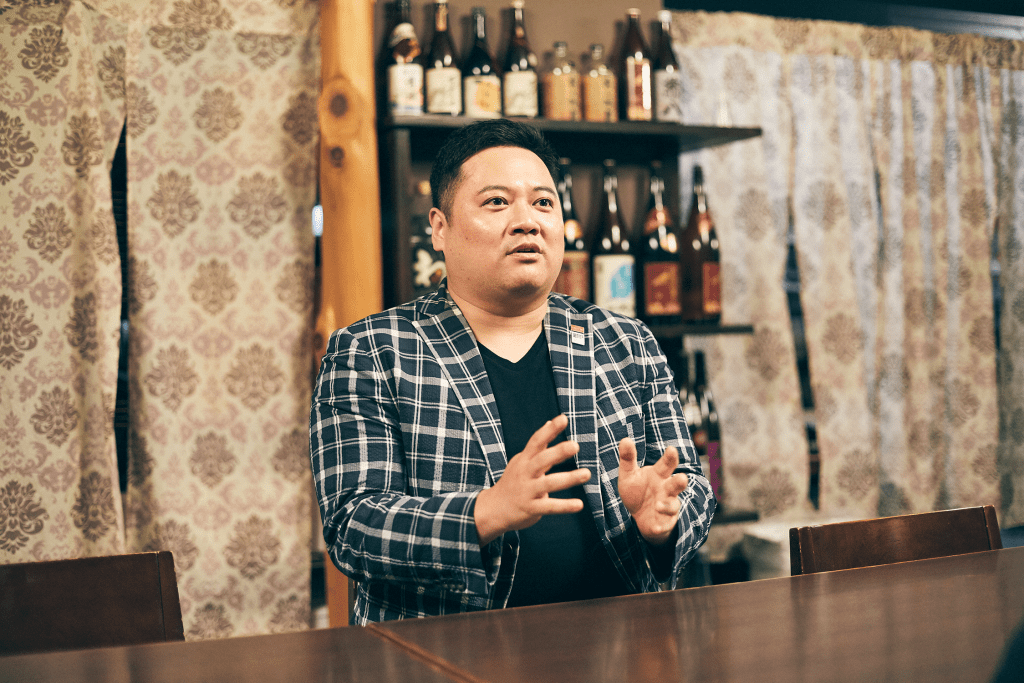
Future proofing the restaurant industry
Running a restaurant in an area that relies on tourism during a pandemic was difficult.
“My business had been doing well, but that changed dramatically with the COVID-19 pandemic. You might be surprised but I had to borrow about 500 million yen,” says Kasai.
However, he was undeterred and that sense of insecurity is the driving force behind his creativity.
With post-pandemic labor shortages, Kasai knows that encouraging people to take up jobs in Osaka’s food industry is crucial for its future.
One measure he’s taken has been to start a tipping system, which is still not popular in Japan.
“I think it’s a great system that can enhance not only the value of my restaurant but also the restaurant industry as a whole,” says Kasai. “It will motivate the staff and raise the level of customer service. It will also help companies who are unable to increase their staff’s salary, and if the pay is better, that will help with the labor shortage.”
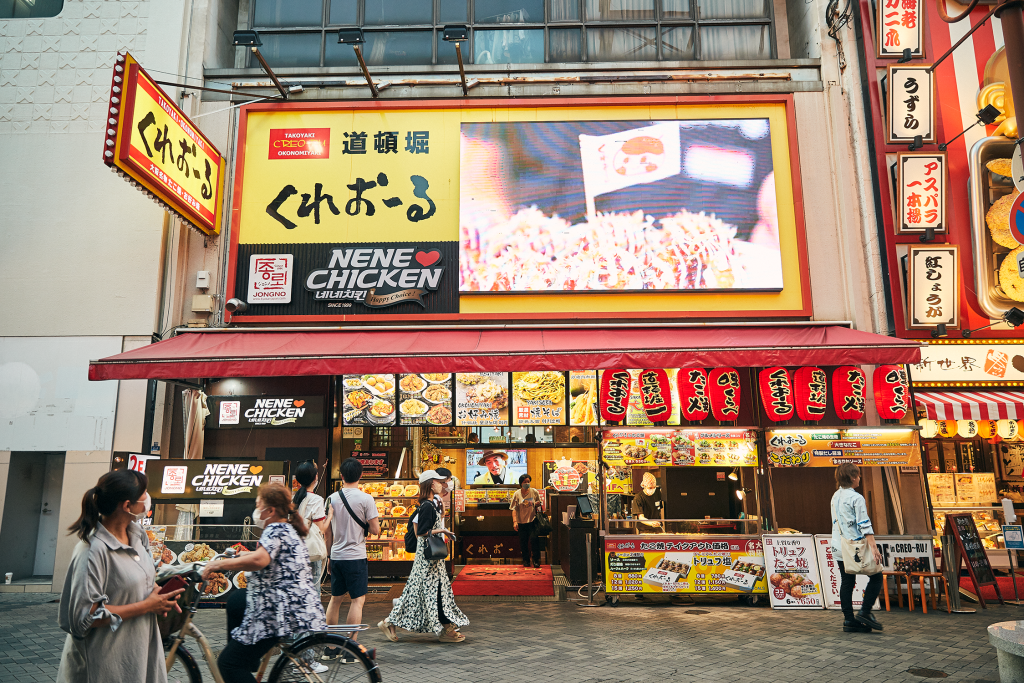
Namba, a world hub
Namba is a district with a particularly strong presence in the Osaka area.
“You can see beautiful buildings anywhere. But what other city has crabs, octopus and cows hanging in the air? The joy of sightseeing is not just the scheduled encounters, but also the unexpected discoveries,” says Kasai. “It is a wondrous city full of surprises, with many exciting hidden spots to be found here. I think that’s what’s so great about Namba.”
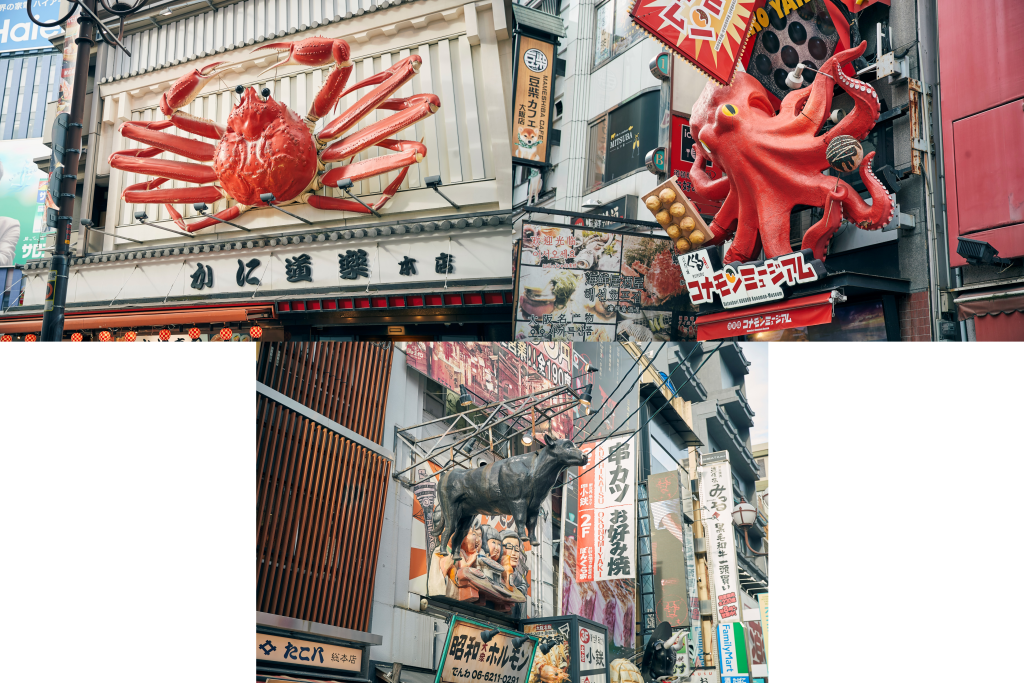
He sees Namba as a symbol of Osaka. “This area gets a lot of coverage on TV so we have to make sure we create positive content. It would be great if we could become known for our sustainability, with the aim of making Namba a world city we can be proud of.”
400 years of history and community
Behind Kasai’s passion for Namba is a commitment to uphold the legacy of generations before him who have made this area what it is today.
“CREO-RU’s success comes down to its location, Namba. The Dotonbori area has survived for 400 years thanks to people who sincerely love this area and have been diligently active in it. I believe that if we want our business to prosper, we have to contribute to this community and the industry,” says Kasai.
“Guests from all over the world will return here soon, and we have been preparing together for that.”
Imagining a bright future, Kasai looks forward to seeing you in Namba.
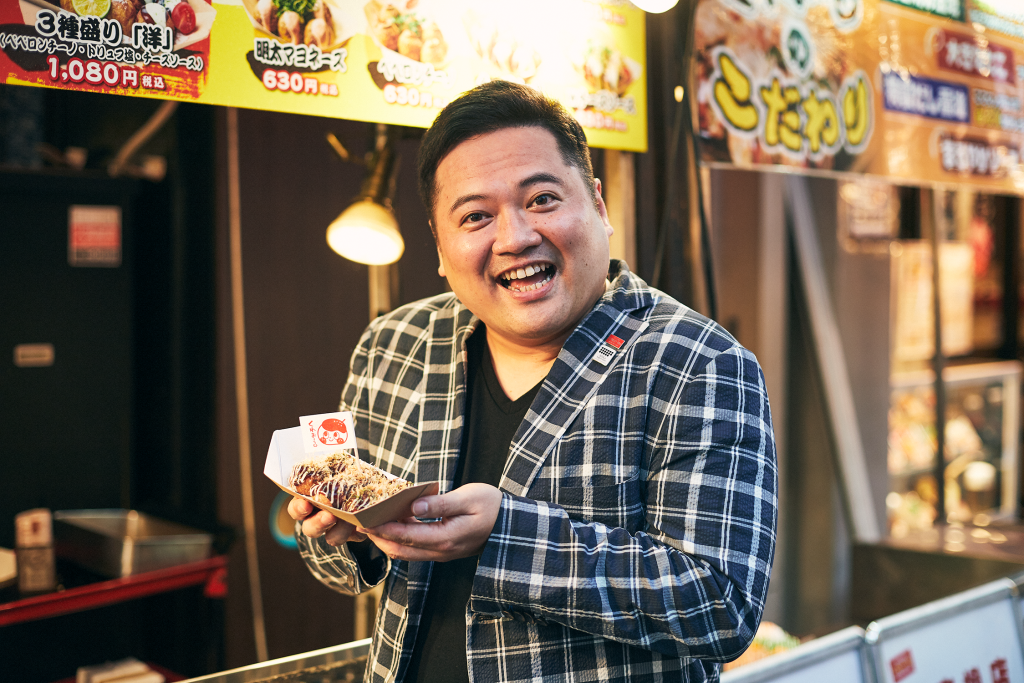
Profile
Kasai opened CREO-RU, a takoyaki restaurant, at the age of 18 with his mother. Starting from a small house in Higashi-Yodogawa Ward, CREO-RU is now a popular restaurant with branches in Kyobashi, Dotonbori and Tokyo. He is also active in food diversity and sustainability initiatives.